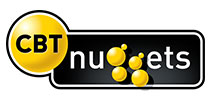در حال حاضر محصولی در سبد خرید شما وجود ندارد.

This intermediate Programming for Data Science training prepares learners to write code that makes sense of unstructured sets from multiple channels and sources and processes information you need, how you need it.
Coding and programming is fundamental to data science. If you want a career in data science, you have to plan on learning at least one or two programming languages, or else prepare yourself for a job hemmed in and restricted by whatever programs you happen to get your hands on.
در این روش نیاز به افزودن محصول به سبد خرید و تکمیل اطلاعات نیست و شما پس از وارد کردن ایمیل خود و طی کردن مراحل پرداخت لینک های دریافت محصولات را در ایمیل خود دریافت خواهید کرد.

✨ تا ۷۰% تخفیف با شارژ کیف پول 🎁
مشاهده پلن ها